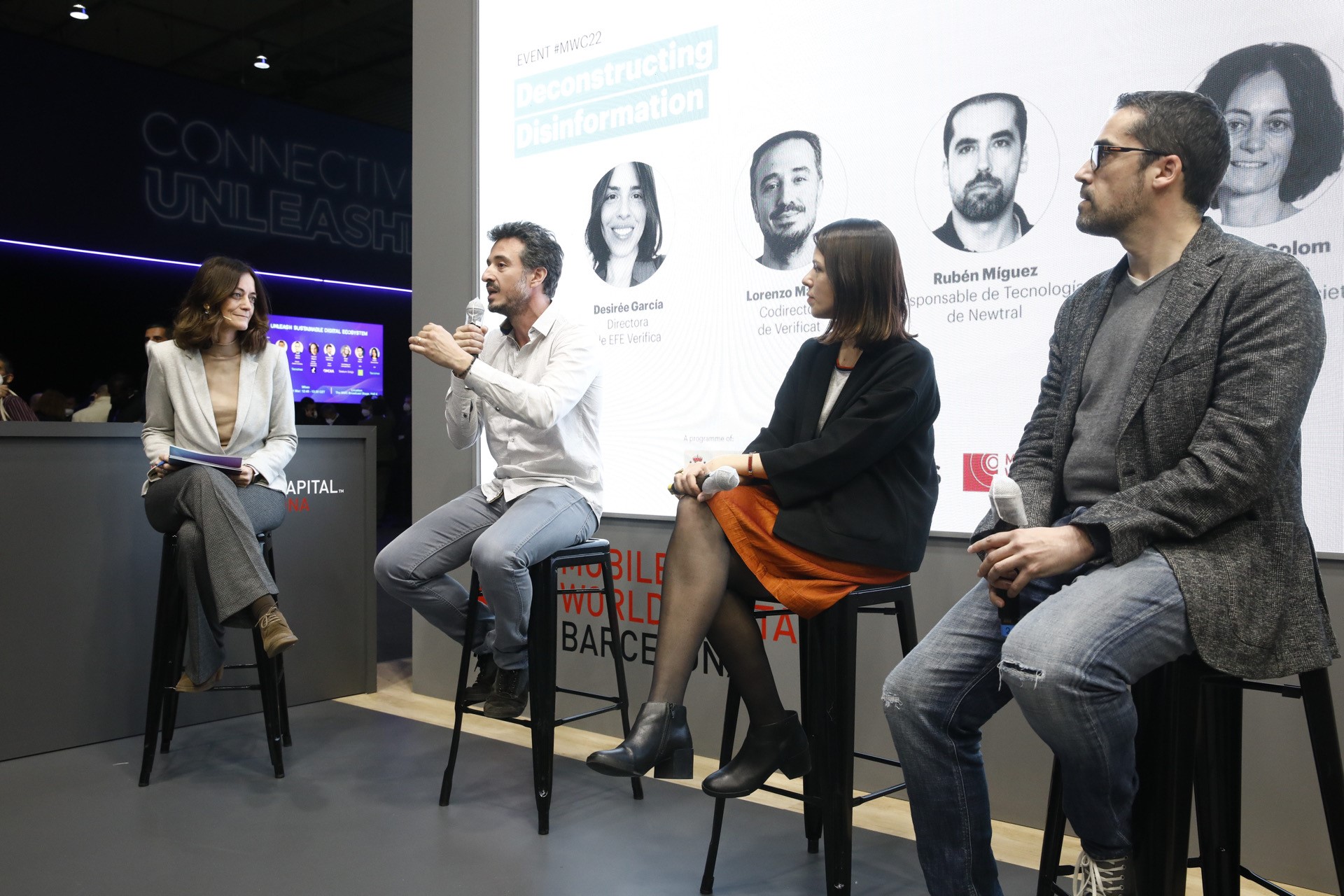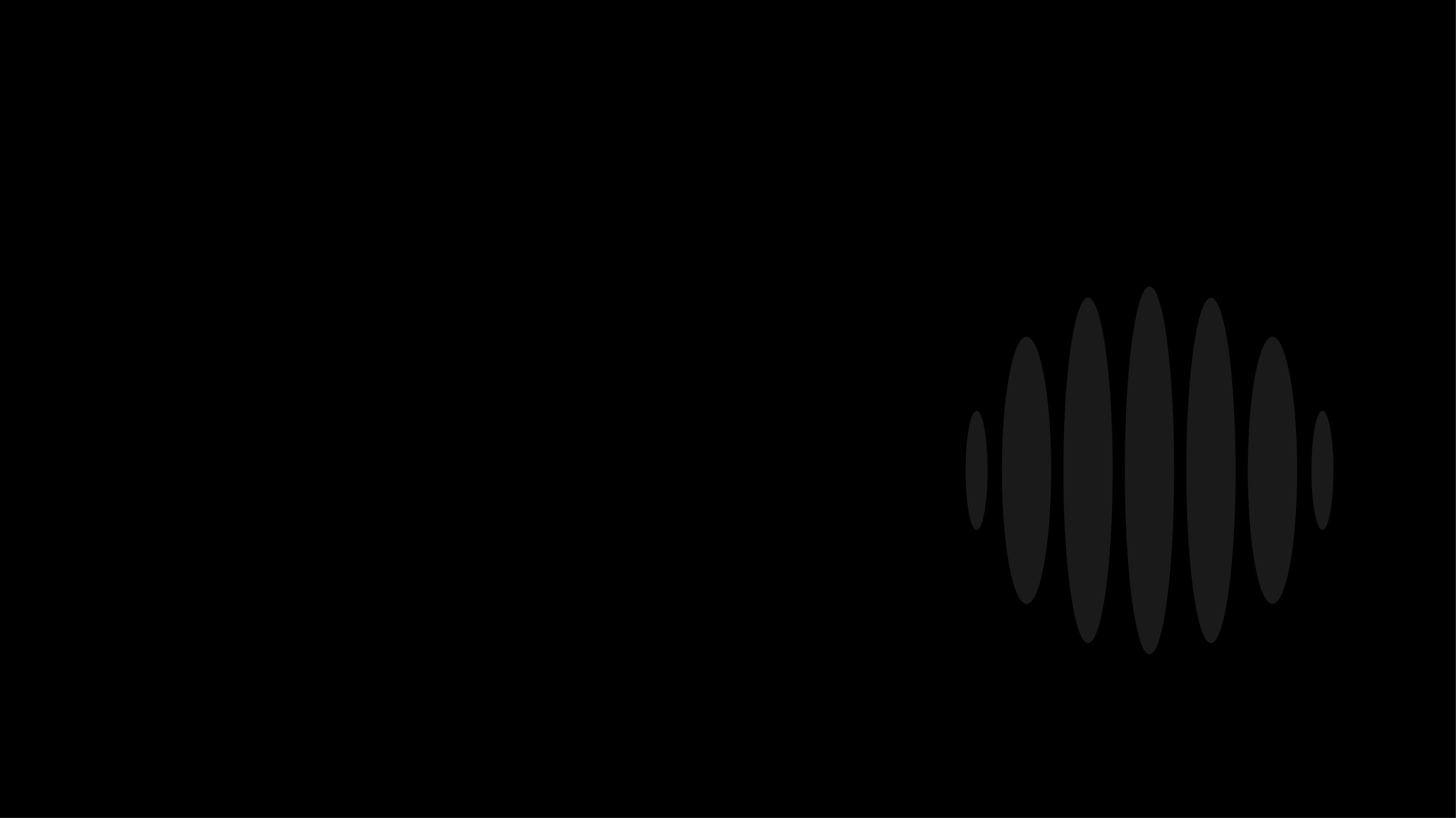- Digital Future Society has organized the event Deconstructing Disinformation to reflect about the evolution of false information in the current context, with direct examples of the war in Ukraine or the hoaxes of the pandemic
- During the round table speakers agreed on the importance of technology for the fact-checker community and stressed the importance of digital literacy to reinforce critical thinking in society
- The winning pilot projects of the “Technology against disinformation” challenge explored the detection of manipulated images and the tracking of false claims within different Internet platforms through language analysis.

1 March, 2022
Barcelona, 1st of March, 2022.- Digital Future Society, a programme of Mobile World Capital Barcelona, organized today the event Deconstructing Disinformation with experts from verification agencies and the European Commission, to reflect about the evolution of false information in the digital age. And stressed the importance of integrating technological solutions that streamline and protocolize the fact-checking process of journalists, planting direct examples of global impact such as the war in Ukraine or the hoaxes generated during the pandemic have been some of the reflections of the current situation in the field of disinformation. In addition, the two winners of the “Technology against disinformation” challenge showcased their projects, which allow the detection of manipulated images (DeepFake) and the tracking of false statements within different Internet platforms through language analysis. The event also counted with the representation of the European Commission, pointing out the lines of work of the administrations in the fight against disinformation.
Cristina Colom, director of Digital Future Society, welcomed the event with a clear message of the current situation and highlighted that “we live in a society of information where, despite having more access to news and its direct source, the paradox shuffles towards disinformation, now more than ever in the history of mankind”. Colom does not falter and affirms that “although technology has been used as a tool to rapidly generate and spread disinformation, it can and should also be part of the solution to counteract the battle that is being fought in the digital sphere”.
Likewise, Manuel Szapiro, head of the European Commission in Barcelona, during his presentation about the fight against fake news, stated that “disinformation puts our democracy and the security of our citizens in danger”. Szapiro highlighted the role of the European administration, betting on collaboration: “The European Union wants to lead this fight against disinformation through monitorin and debunking false information, joining forces, creating legislation and empowering society”.
The war of disinformation
The central part of the event featured a round table about disinformation in the post-pandemic world with some of the main organizations that work to detect and stop disinformation. The role of technological tools in the information verification process or the devastating current examples such as the war in Ukraine have dominated the debate. The director of Digital Future Society, Cristina Colom, defined it as “another war that is happening the digital sphere as a true battlefield” and this has been corroborated with data by verification experts.
Rubén Míguez, Head of Technology at Newtral, pointed towards the coronavirus pandemic as a turning point and recalls that: “it had a great effect on the fact-checkers community, highlighting their limitations. We know that the manual process of fact-checkers will not be able to fight this battle, so we must automate the first two steps of verification to speed up the process. We save more than 50% of the time of journalists and have greater reach”. In addition, he concluded that “technology is not the solution, but it is the tool to combine to face the waves of disinformation such as the war in Ukraine, the pandemic or many others”.
For her part, Desirée Garcia, head of Efe Verifica, collected Míguez’s testimony and affirmed that: “verification technology is the most connected to journalism and should continue to do so. Proof of this, are the hoaxes of Ukraine. If we have been able to detect false information, it has been thanks to programs that allow us to analyse false images; processes that we could not have carried out a few years ago”. Garcia pointed out an example with a devastating fact: in the first five days since the start of the war in Ukraine, more than 500 hoaxes had been registered circulating to virally disseminate disinformation about the conflict: “far from disappearing, disinformation is increasing, and it is biggest fear”. Desirée García concluded with a wish: “the great challenge is that verification reaches as many people as lies, a great challenge considering that Fake News sells more than the truth”.
Finally, Lorenzo Marini, co-director of Verificat, focused on the importance of education “a perspective that we must work from the beginning to incorporate into the educational system, filtering out sources and biases. This will allow us to apply critical thinking to the information that is really truthful”. Marini adds that literacy now has a digital component and emphasizes the importance of critical thinking since “it is very important, but there is a previous step to know how to filter before reaching critical analysis, due to the amount of existing information.”
Technology, part of the solution
The event about disinformation concluded with the presentation of two technological solutions promoted by a Digital Future Society call, which seeks to enhance the content verification system: the Polytechnic University of Madrid with a fact-checking tool based on neural language and the CERTH-ITI research centre in Greece focused on the detection of manipulated images (Deep fake).
Alejandro Martin, assistant professor in the Information Systems department at the Polytechnic University of Madrid and member of the Applied Intelligence and Data Analysis research group, stated that “users are increasingly sharing and disseminating more information, in front of this scenario the project aims to show the disinformation scheme, to identify all agents who participate in the process”. Martín reinforced the importance of the project to prioritize the monitoring and automated analysis of false statements “to attack disinformation from its origin and to be able to contrast information in different languages to trace the origin of the hoax using Artificial Intelligence”.
For his part, Nikos Sarris, senior researcher at CERTH-ITI and winner of the DeepFake Detection Lab solution, declared that “the use of Artificial Intelligence can be used as a positive or negative tool depending on its purpose.” In addition, he called for action to the community of fact-checkers to reinforce knowledge and offer the necessary resources to understand and counteract the problem of the recent DeepFake technology, an increasingly sophisticated tool that as he concluded “will be one of the biggest challenges in the evolution of image manipulation”.
Stay up to date about everything
Subscribe to stay up to date with the latest content from Mobile World Capital Barcelona.
